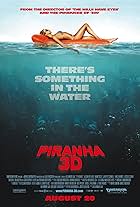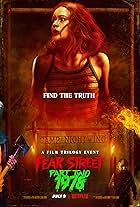
Seb-15
Welcome to the new profile
We're still working on updating some profile features. To see the badges, ratings breakdowns, and polls for this profile, please go to the previous version.
Ratings228
Seb-15's rating
Reviews5
Seb-15's rating
The first principle of a film is that it should have a semblance of a plot. A person does an action in a place. This falls down right away as a film. At minimum we must have some kind of story to tell. It'sa film, not a collection of pet photos. If you take the immaculate scenery they have found and took them and printed them and made "Galicia At Night" it would be a gorgeous photo book. But as a movie this offers nothing.
A hyper minimalist saunter through Franco-Spain in an unspecified time by unspecified people somehow stretches the 90 minutes runtime into a long tedious slog. Characters were never get the name of muse conversationally about a time we don't know about. Every shot feels 10-90 seconds too long and too lingering, as if the director knew the Arthouse crowd will eat up a 50 second closeup of a cow breathing. But films that dabbled in self-importance usually accompany their grandeur with more than Chiaroscuro visuals of a forest.
Hopefully some people will enjoy the visuals or be looking for a collection of short stories about life in Spain, but for me it was a real struggle. Will not be revisiting.
A hyper minimalist saunter through Franco-Spain in an unspecified time by unspecified people somehow stretches the 90 minutes runtime into a long tedious slog. Characters were never get the name of muse conversationally about a time we don't know about. Every shot feels 10-90 seconds too long and too lingering, as if the director knew the Arthouse crowd will eat up a 50 second closeup of a cow breathing. But films that dabbled in self-importance usually accompany their grandeur with more than Chiaroscuro visuals of a forest.
Hopefully some people will enjoy the visuals or be looking for a collection of short stories about life in Spain, but for me it was a real struggle. Will not be revisiting.
As an avid Japanese cinema guy, I've seen my fair share of great films, from the sublime Kurosawa epics to the modern horror, drama and historical samurai sword-and-sandals films we sometimes are blessed with. What I have never seen is a film that is somehow 3 hours long, and yet is also somehow one of the fastest paced films I've come across. It is in equal measures incredible visually, in that I will forever remember the visuals. They aren't cutting edge CGI scenes depicted, and yet every janky goldfish floating in a spaceship, random camera lense refocus, and amateur hour photoshop visual is somehow pleasing to the eye. The sound is 100% mis-synched and I presume on purpose to reflect olden films and the visual medium. There's a great visual gag on subtitled films as well, which is then also offset with smelly fart gags.
The story is simple enough, 3 moviegoers and a fourth young innocent girl, Noriko, are sucked into the war films they are watching, playing out little vignettes from spoofs of wartime classics. The acting is incredible, in that it somehow works despite being over the top, unsynched, and at times unhinged. The directing is superb, because I don't have a single doubt that in the 3 years it took to make this while the Director was dying of lung cancer, he was meticulous and every random floating goldfish and fart joke, every heartfelt love confession, each brutal rape scene, all have a role to play in the service of two key things.
The first is a genuine overt love for cinema, the power to move and the power to mislead, and in doing so to still arrive at a truth that, at its best, elevates us all and has the power to shape our future. With his nods to film-making, to classics in Japanese cinema, to nods to film-makers who perished too early in war themselves, Obayashi is both paying tribute and asserting the importance of the works of fiction on society.
The second, more overt and yet also more difficult to stomach, is the agony and at times evil of war, through the lens of atrocities committed during war, after the war, and the impact of this on people. There is no shortage of people having the worst brought out of them through the wars they are involved in, and our hapless protagonists interactions with them all.
Fundamentally, having some understanding of Japanese can go a long way as the subtitles fail to capture the on-screen written Japanese for several key scenes, and the importance of seeing an Okinawa-based dialogue alongside the Japanese subtitles alongside the English ones are pretty challenging. But also, the importance of the Boshin War on Japan and the removal of the Tokugawa shogunate, bringing forth the Meiji era of modernization of Japan, as well as the Sino-Japanese war and the fighting in Manchuria are central to the importance of the anti-war message. Indeed, as noted in some critic reviews, Western audiences probably only start to feel more at home once you get to World War II, the Okinawa draft experience and the bombing of Hiroshima, as easy references. It's also where those who have visited Hiroshima start to feel a sinking feeling as the people on screen in the final moments are those made most famous in the museum including what appears to be the crane girl, and the burned soldiers, and culminating in the scene of the shadow on the steps, an image that cannot be forgotten once seen. These effective moments are incredibly moving and chilling, which is a weird feeling in a film that announces itself with enthusiastic reading of the opening credits, puts in a fake intermission, and even thanks some random actor who couldn't be there, which is never really explored. I can't tell if that is a genuine thank you to an actor who could not travel, or if this is just more fiction to harken back to the olden days.
The mixture of silly slapstick, crazy cuts, deep and profound moments in Japanese history, crucial poems from a wartime poems, and an unconventional narrative with the very serious and dour tones of war as the film progresses are something that shouldn't work. I should be rating it 1/10 for visuals for what is "janky" CGI, or 1/10 for sound that simply will not synch to the actors speaking the lines, or 1/10 for the narrative structure that is all over the shop. But it works, I don't know how, but it absolutely works. It's a masterpiece of cinema, an ode the joys of film, a tribute to those whose life goal was to make great films, and a fitting end to an incredible career by Obayashi, who sadly couldn't see his work get a general release. It was ironically scheduled for domestic release on the day he died, but was pulled due to the pandemic.
I cannot recommend highly enough that people watch this, and I do think that you need to get through the full film as there's a strong turn for the "familiar" that comes with moving into Okinawa 1941 that might help those not as familiar with Japanese history.
The story is simple enough, 3 moviegoers and a fourth young innocent girl, Noriko, are sucked into the war films they are watching, playing out little vignettes from spoofs of wartime classics. The acting is incredible, in that it somehow works despite being over the top, unsynched, and at times unhinged. The directing is superb, because I don't have a single doubt that in the 3 years it took to make this while the Director was dying of lung cancer, he was meticulous and every random floating goldfish and fart joke, every heartfelt love confession, each brutal rape scene, all have a role to play in the service of two key things.
The first is a genuine overt love for cinema, the power to move and the power to mislead, and in doing so to still arrive at a truth that, at its best, elevates us all and has the power to shape our future. With his nods to film-making, to classics in Japanese cinema, to nods to film-makers who perished too early in war themselves, Obayashi is both paying tribute and asserting the importance of the works of fiction on society.
The second, more overt and yet also more difficult to stomach, is the agony and at times evil of war, through the lens of atrocities committed during war, after the war, and the impact of this on people. There is no shortage of people having the worst brought out of them through the wars they are involved in, and our hapless protagonists interactions with them all.
Fundamentally, having some understanding of Japanese can go a long way as the subtitles fail to capture the on-screen written Japanese for several key scenes, and the importance of seeing an Okinawa-based dialogue alongside the Japanese subtitles alongside the English ones are pretty challenging. But also, the importance of the Boshin War on Japan and the removal of the Tokugawa shogunate, bringing forth the Meiji era of modernization of Japan, as well as the Sino-Japanese war and the fighting in Manchuria are central to the importance of the anti-war message. Indeed, as noted in some critic reviews, Western audiences probably only start to feel more at home once you get to World War II, the Okinawa draft experience and the bombing of Hiroshima, as easy references. It's also where those who have visited Hiroshima start to feel a sinking feeling as the people on screen in the final moments are those made most famous in the museum including what appears to be the crane girl, and the burned soldiers, and culminating in the scene of the shadow on the steps, an image that cannot be forgotten once seen. These effective moments are incredibly moving and chilling, which is a weird feeling in a film that announces itself with enthusiastic reading of the opening credits, puts in a fake intermission, and even thanks some random actor who couldn't be there, which is never really explored. I can't tell if that is a genuine thank you to an actor who could not travel, or if this is just more fiction to harken back to the olden days.
The mixture of silly slapstick, crazy cuts, deep and profound moments in Japanese history, crucial poems from a wartime poems, and an unconventional narrative with the very serious and dour tones of war as the film progresses are something that shouldn't work. I should be rating it 1/10 for visuals for what is "janky" CGI, or 1/10 for sound that simply will not synch to the actors speaking the lines, or 1/10 for the narrative structure that is all over the shop. But it works, I don't know how, but it absolutely works. It's a masterpiece of cinema, an ode the joys of film, a tribute to those whose life goal was to make great films, and a fitting end to an incredible career by Obayashi, who sadly couldn't see his work get a general release. It was ironically scheduled for domestic release on the day he died, but was pulled due to the pandemic.
I cannot recommend highly enough that people watch this, and I do think that you need to get through the full film as there's a strong turn for the "familiar" that comes with moving into Okinawa 1941 that might help those not as familiar with Japanese history.
























